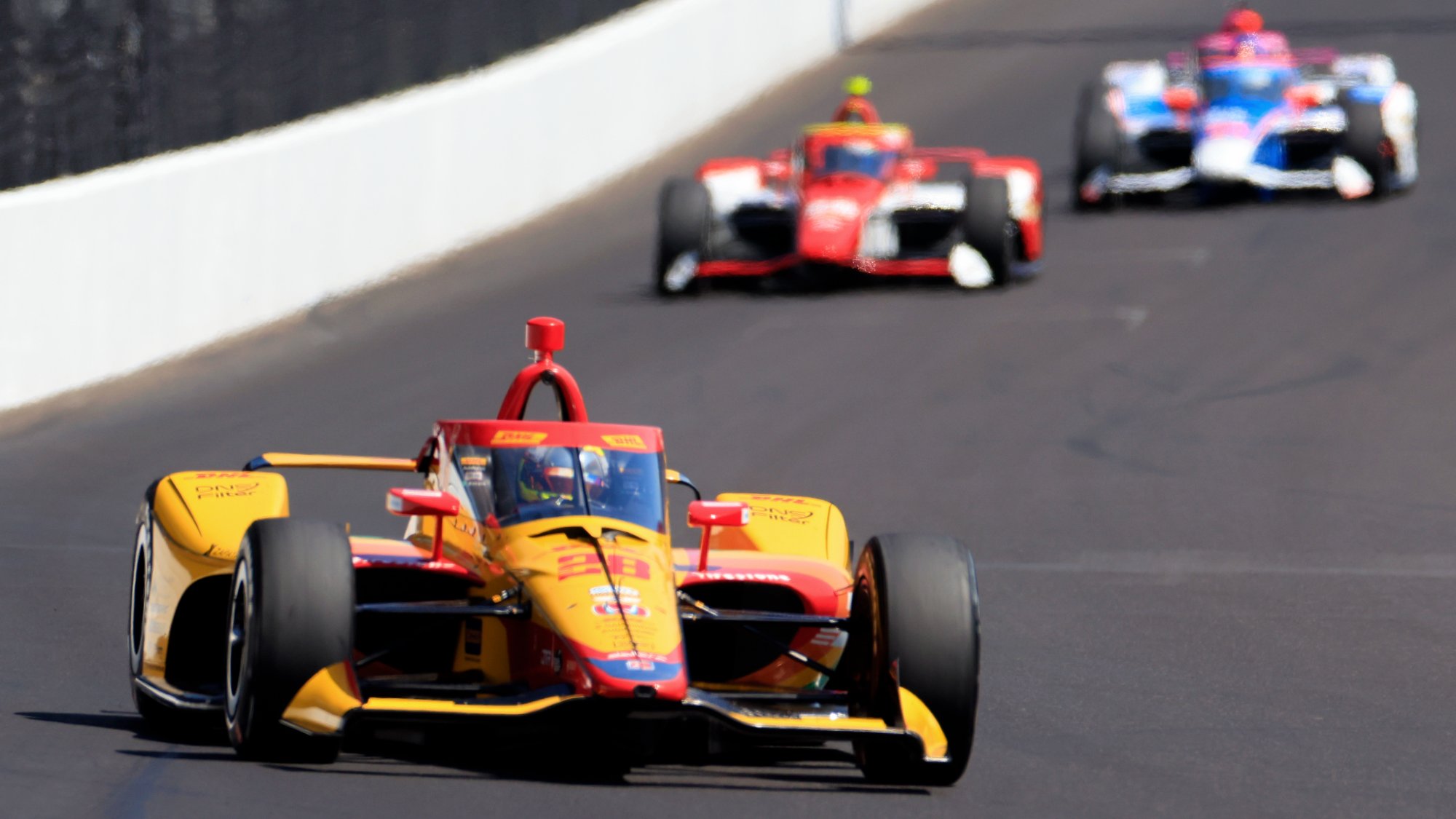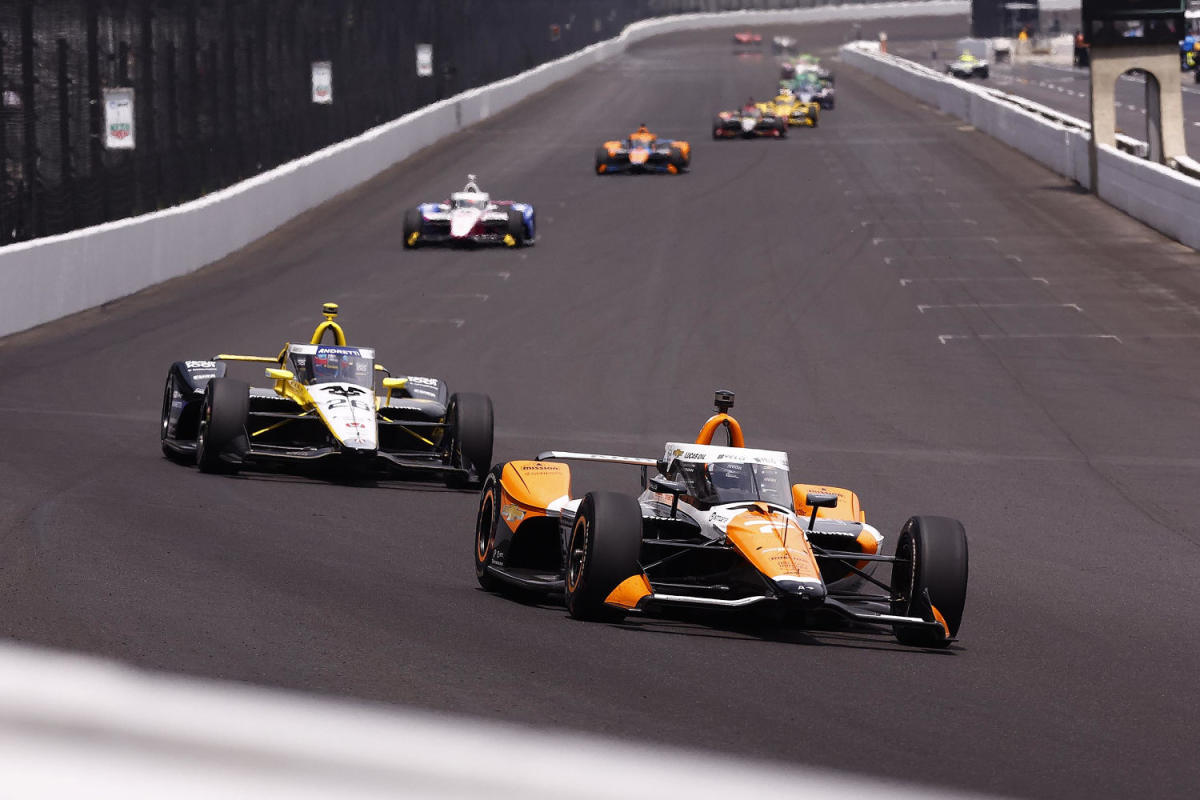Indianapolis 500 Event Overview

The Indianapolis 500, also known as “The Greatest Spectacle in Racing,” is an annual open-wheel car race held at Indianapolis Motor Speedway in the state of Indiana, United States. It is considered one of the most prestigious and well-known races in the world, alongside the Monaco Grand Prix and the 24 Hours of Le Mans.
The race was first held in 1911 and has been run every year since, except for during World War I and World War II. The race is run on a 2.5-mile (4.0 km) oval track, and the drivers complete 200 laps for a total race distance of 500 miles (804.67 km). The race is known for its high speeds, with cars reaching speeds of over 230 miles per hour (370 km/h) on the straightaways.
The qualifying process for the Indianapolis 500 is unique in that it is a two-day event. On the first day, drivers attempt to qualify for the race by completing four laps of the track at a speed of over 230 miles per hour (370 km/h). The top 33 drivers from the first day of qualifying advance to the second day, where they compete for the pole position. The pole position is the first starting position on the grid, and it is considered a great honor to win it.
The race format for the Indianapolis 500 is also unique. The race is divided into two segments, with a break in the middle for pit stops and driver changes. The first segment is 100 laps, and the second segment is 100 laps. The driver who completes the 200 laps in the shortest amount of time wins the race.
Race Track
The Indianapolis Motor Speedway is a 2.5-mile (4.0 km) oval track located in Speedway, Indiana, United States. The track was built in 1909 and has hosted the Indianapolis 500 every year since 1911, except for during World War I and World War II.
The track is known for its high speeds, with cars reaching speeds of over 230 miles per hour (370 km/h) on the straightaways. The track is also known for its unique shape, which features four turns that are all banked at different angles. The turns are named after four famous race car drivers:
– Turn 1: The Lorenzo Bandini Turn
– Turn 2: The Mario Andretti Turn
– Turn 3: The Al Unser Turn
– Turn 4: The Eddie Sachs Turn
Qualifying Process
The qualifying process for the Indianapolis 500 is unique in that it is a two-day event. On the first day, drivers attempt to qualify for the race by completing four laps of the track at a speed of over 230 miles per hour (370 km/h). The top 33 drivers from the first day of qualifying advance to the second day, where they compete for the pole position. The pole position is the first starting position on the grid, and it is considered a great honor to win it.
The second day of qualifying is known as “Bump Day.” On Bump Day, the drivers who did not qualify on the first day attempt to bump one of the drivers who did qualify. The drivers who are bumped are then eliminated from the race.
Race Format, Indianapolis 500 start time
The race format for the Indianapolis 500 is also unique. The race is divided into two segments, with a break in the middle for pit stops and driver changes. The first segment is 100 laps, and the second segment is 100 laps. The driver who completes the 200 laps in the shortest amount of time wins the race.
The pit stops during the Indianapolis 500 are some of the most important in all of motorsports. The crews have to be able to change four tires, refuel the car, and make any necessary repairs in a matter of seconds. The pit stops can often make the difference between winning and losing the race.
Race Day Preparations and Atmosphere
Indianapolis 500 start time – The Indianapolis 500 is a spectacle of speed, tradition, and anticipation. On race day, the atmosphere is electric with excitement as the city of Indianapolis gears up for the biggest day in motorsports.
Pre-race festivities begin early in the morning with the Snake Pit Ball, a lively party held at the Indianapolis Motor Speedway. Fans gather to enjoy live music, food, and drinks while mingling with drivers and celebrities. As the day progresses, the track transforms into a bustling hub of activity, with vendors selling merchandise, food, and drinks.
The Pace Car
One of the most iconic traditions of the Indianapolis 500 is the Pace Car. Each year, a different automaker is chosen to provide the Pace Car, which leads the field around the track for the first few laps of the race. The Pace Car is typically a high-performance model, and its driver is often a celebrity or a former Indianapolis 500 winner.
The Pace Car serves several purposes. It helps to pace the field during the early laps of the race, ensuring that the cars do not get too far spread out. It also provides a visual cue for the drivers, helping them to stay on track. And, of course, it is a marketing opportunity for the automaker that provides it.
The Start of the Race
As the green flag waves and the cars roar to life, the excitement reaches a fever pitch. The crowd cheers wildly as the cars accelerate down the front straightaway, eager to see who will emerge victorious. The first few laps are always the most chaotic, as the drivers jockey for position and try to avoid crashing. But once the field settles down, the race becomes a test of endurance and skill.
Race Start and Strategies: Indianapolis 500 Start Time

The Indianapolis 500, a hallowed event in the world of motorsports, boasts a meticulously planned start procedure that sets the tone for the exhilarating race to come. Understanding the intricacies of the start and the strategies employed by drivers is crucial to appreciating the complexities of this legendary race.
At precisely 12:45 PM local time, the command “Gentlemen, start your engines!” reverberates through the Indianapolis Motor Speedway, signaling the commencement of the race. The drivers, poised in their sleek machines, ignite their powerful engines, filling the air with a deafening roar.
Starting Grid Positioning
The starting grid for the Indianapolis 500 is determined by qualifying times, with the fastest qualifier securing the coveted pole position. This coveted spot offers a significant advantage, as it allows the driver to dictate the pace and control the race from the outset.
Early Lap Maneuvers
The opening laps of the Indianapolis 500 are a frenetic dance of overtaking maneuvers and strategic positioning. Drivers aggressively vie for track position, attempting to gain an edge over their rivals. Bold overtakes and calculated passes are commonplace, as each driver seeks to establish their dominance early on.
Maintaining a high average speed is paramount in the early laps, as it allows drivers to accumulate valuable track time and build momentum. However, managing fuel consumption is equally crucial, as the race distance of 500 miles demands careful planning and efficient use of resources.
Pit Stop Strategies
Pit stops play a pivotal role in the Indianapolis 500, offering teams an opportunity to replenish fuel, change tires, and make necessary adjustments. The timing and execution of pit stops can significantly impact a driver’s overall race strategy.
Teams must strike a delicate balance between maximizing track time and ensuring their cars are adequately prepared for the rigors of the race. Pit crews work with lightning speed and precision, performing tire changes and refueling in mere seconds, minimizing the time lost during pit stops.
Tire Management
Tire management is a critical aspect of the Indianapolis 500, as the extreme demands of the race can take a heavy toll on tires. Drivers must carefully monitor their tire wear and adjust their driving style accordingly to preserve tire life.
Teams employ various strategies to manage tire wear, including rotating tires during pit stops and adjusting the car’s setup to reduce tire degradation. Maintaining optimal tire pressure and temperature is also essential to ensure maximum performance and durability.
The race starts at 12:45 p.m. ET on Sunday, May 28. For the latest updates, including practice and qualifying results, visit indianapolis 500 updates. You can also follow the race live on NBC.
As the sun rises on Indianapolis, it’s time to get ready for the start of the iconic Indianapolis 500. For the latest news and updates on the race, head over to our indy 500 update page. We’ll keep you informed on everything you need to know about the race, from the starting lineup to the checkered flag.
With the Indianapolis 500 set to start at 12:45 p.m. ET, fans are keeping a close eye on the indianapolis weather radar. Rain is a possibility, so fans should be prepared for a wet race. The track is expected to be dry at the start of the race, but there is a chance of rain later in the afternoon.
Fans should check the weather radar before heading to the track to make sure they are prepared for any weather conditions.

